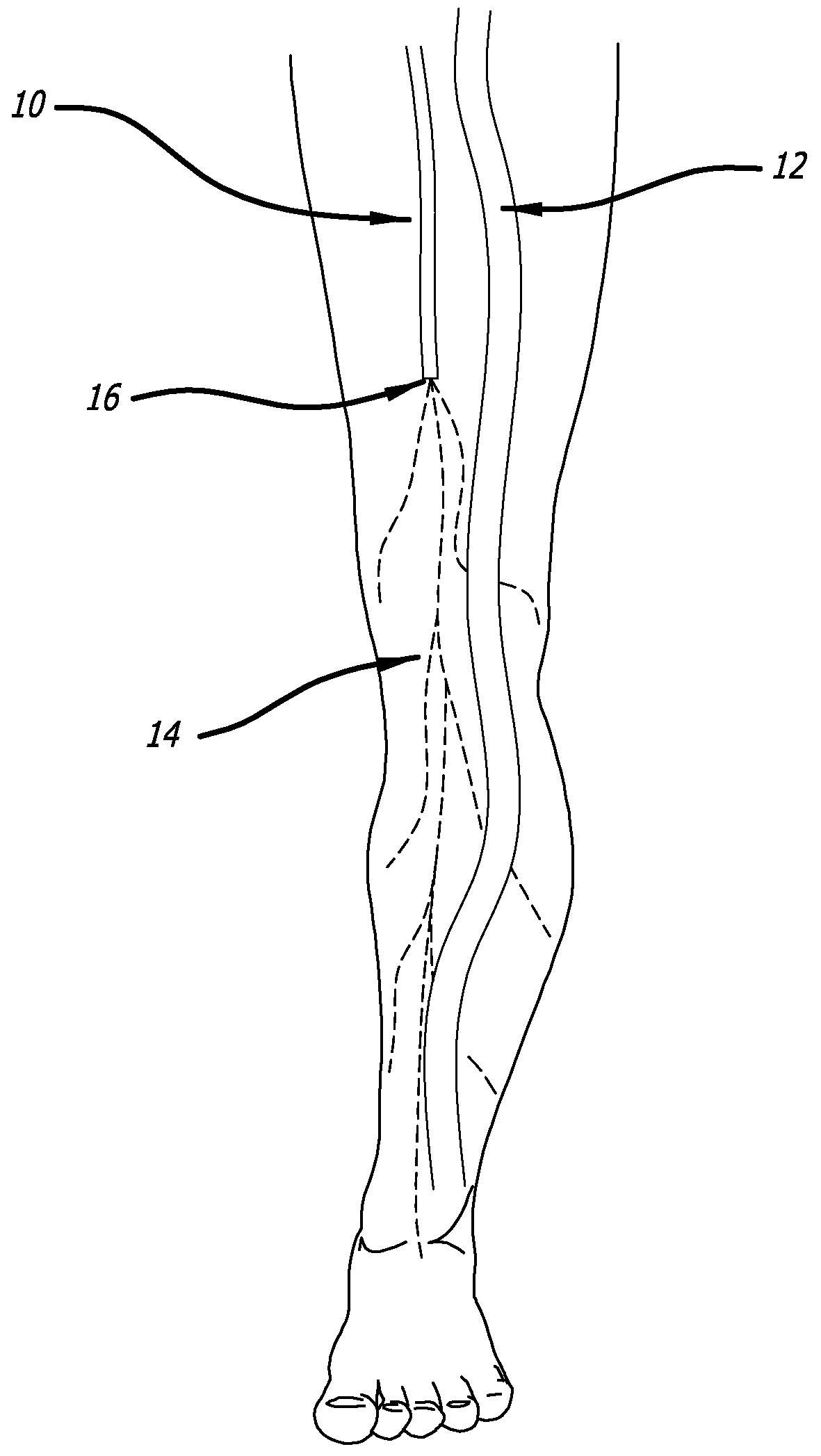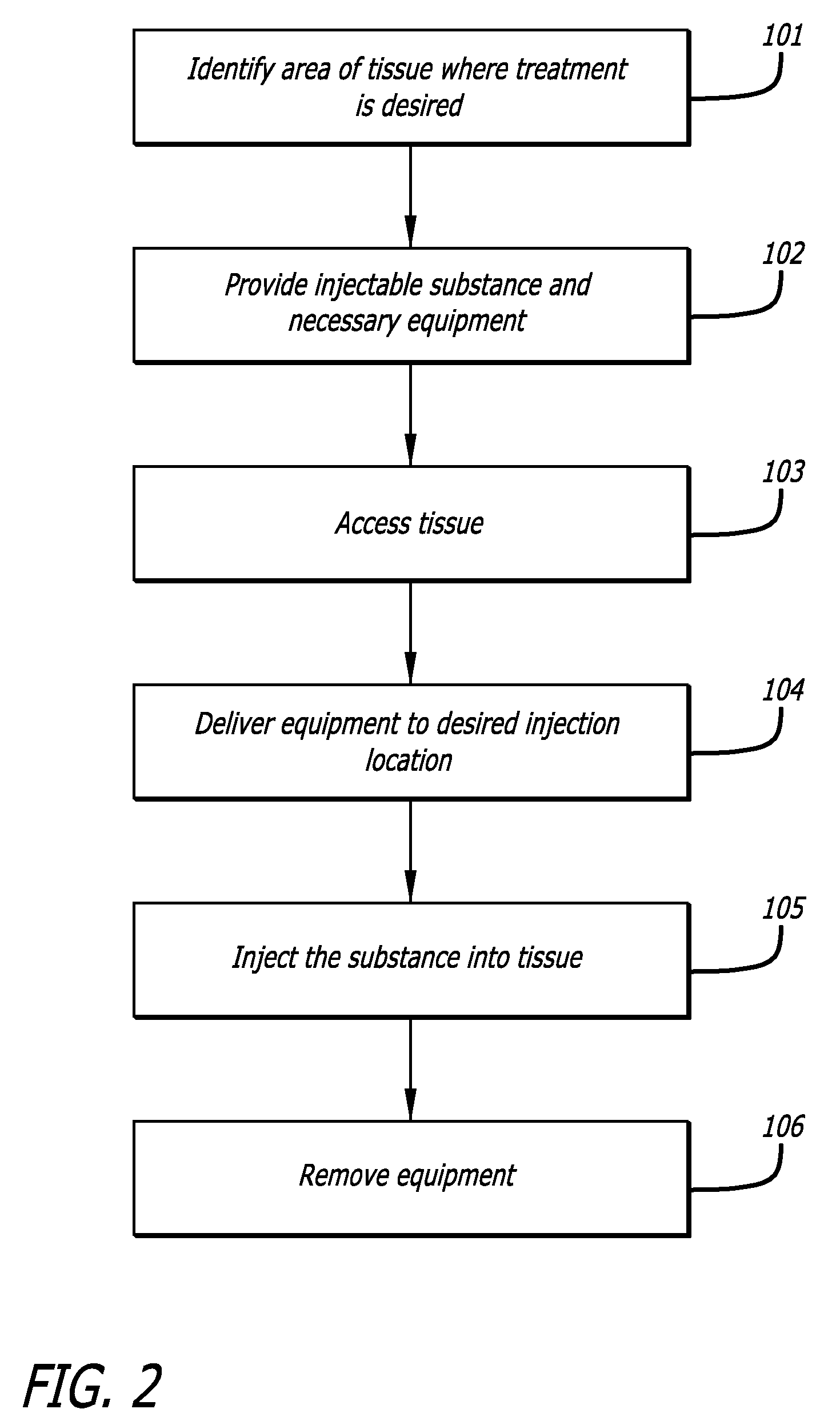Methods and Systems for Improving Tissue Perfusion
a tissue perfusion and tissue technology, applied in the field of peripheral vascular disease treatment, can solve the problems of tissue ischemia, aberrant blood flow, occlusion of the vessel, etc., and achieve the effect of improving tissue perfusion
- Summary
- Abstract
- Description
- Claims
- Application Information
AI Technical Summary
Benefits of technology
Problems solved by technology
Method used
Image
Examples
example 1
[0117]Various combinations of the components for platelet gel were tested in vitro using human blood, porcine blood, and ovine blood. One composition involved the extraction of 6 mL of platelet rich plasma (PRP) from 60 mL of whole blood (52.5 mL whole blood+7.5 mL anticoagulant [ACD-A, Anticoagulant Citrate Dextrose Solution A, comprising citric acid, sodium citrate and dextrose]). This PRP was combined approximately 10:1 (vol:vol) with bovine thrombin (1000 U / mL stock in 10% CaCl2), such that mixing occurred only in the targeted tissue. This was the composition tested in vivo as described below.
example 2
[0118]The ability of fibrinogen to affect the gelling and / or physical properties of platelet gel was directly tested in vitro. PRP and platelet poor plasma (PPP) were prepared from fresh sheep blood using the Medtronic Magellan® Platelet Separator. Autologous fibrinogen was further extracted from the resulting PPP using an ethanol precipitation method. Alternative methods such as cryoprecipitation can be used for isolation of fibrinogen. The precipitated fibrinogen was re-suspended in PRP to generate autologous fibrinogen-fortified PRP (AFFPRP). Two preparations of APG were compared from the same animal—(1) conventional APG made from PRP+1000 U / ml bovine thrombin in a 10:1 ratio and (2) fibrinogen-fortified APG made from AFFPRP+1000 U / ml bovine thrombin in a 10:1 ratio. The fibrinogen-fortified APG was noticeably firmer / harder than the conventional APG generated from the same animal's blood. This confirms the utility of fibrinogen to augment the mechanical properties of APG without ...
example 3
[0119]It has been successfully demonstrated that intramuscular delivery of APG as two separate components (autologous PRP and bovine thrombin) that meet and clot in the tissue can be safely achieved in vivo.
[0120]Model & Access: A healthy pig model was used to test the safety and efficacy of delivery into cardiac muscle tissue. One hundred and eighty milliliters of unheparinized blood was obtained and used to make 18 cc of PRP using a Medtronic Magellan® Autologous Platelet Separator on the day of the procedure. The animal was then heparinized to an activated clotting time (ACT) in the 250-300 range. A median sternotomy provided access to the epicardial surface of the heart.
[0121]Injections: Three injection systems were tested: System 1, a 27 gauge syringe to deliver PRP alone; System 2, an 18 gauge stainless steel needle containing a 2-lumen beveled catheter (0.0085-inch internal diameter [ID] each) with luer-lock into the needle and two independent proximal syringes (12 mL and 1 m...
PUM
| Property | Measurement | Unit |
|---|---|---|
| volume | aaaaa | aaaaa |
| volume | aaaaa | aaaaa |
| clotting time | aaaaa | aaaaa |
Abstract
Description
Claims
Application Information
 Login to View More
Login to View More - R&D
- Intellectual Property
- Life Sciences
- Materials
- Tech Scout
- Unparalleled Data Quality
- Higher Quality Content
- 60% Fewer Hallucinations
Browse by: Latest US Patents, China's latest patents, Technical Efficacy Thesaurus, Application Domain, Technology Topic, Popular Technical Reports.
© 2025 PatSnap. All rights reserved.Legal|Privacy policy|Modern Slavery Act Transparency Statement|Sitemap|About US| Contact US: help@patsnap.com



